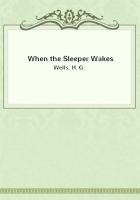(December 1831)
The Pilgrim's Progress, with a Life of John Bunyan. By ROBERT SOUTHEY, Esq., LL. D., Poet Laureate. Illustrated with Engravings. 8vo. London: 1831.
THIS is an eminently beautiful and splendid edition of a book which well deserves all that the printer and the engraver can do for it. The Life of Bunyan is, of course, not a performance which can add much to the literary reputation of such a writer as Mr. Southey. But it is written in excellent English, and, for the most part, in an excellent spirit. Mr. Southey propounds, we need not say, many opinions from which we altogether dissent; and his attempts to excuse the odious persecution to which Bunyan was subjected have sometimes moved our indignation. But we will avoid this topic. We are at present much more inclined to join in paying homage to, the genius of a great man than to engage in a controversy concerning church-government and toleration.
We must not pass without notice the engravings with which this volume is decorated. Some of Mr. Harvey's woodcuts are admirably designed and executed. Mr. Martin's illustrations do not please us quite so well. His Valley of the Shadow of Death is not that Valley of the Shadow of Death which Bunyan imagined. At all events, it is not that dark and horrible glen which has from childhood been in our mind's eye. The valley is a cavern: the quagmire is a lake: the straight path runs zigzag: and Christian appears like a speck in the darkness of the immense vault. We miss, too, those hideous forms which make so striking a part of the description of Bunyan, and which Salvator Rosa would have loved to draw. It is with unfeigned diffidence that we pronounce judgment on any question relating to the art of painting. But it appears to us that Mr. Martin has not of late been fortunate in his choice of subjects. He should never have attempted to illustrate the Paradise Lost. There can be no two manners more directly opposed to each other than the manner of his painting and the manner of Milton's poetry. Those things which are mere accessories in the descriptions become the principal objects in the pictures; and those figures which are most prominent in the descriptions can be detected in the pictures only by a very close scrutiny. Mr. Martin has succeeded perfectly in representing the pillars and candelabras of Pandaemonium. But he has forgotten that Milton's Pandaemonium is merely the background to Satan. In the picture, the Archangel is scarcely visible amidst the endless colonnades of his infernal palace. Milton's Paradise, again, is merely the background to his Adam and Eve. But in Mr. Martin's picture the landscape is everything. Adam, Eve, and Raphael attract much less notice than the lake and the mountains, the gigantic flowers, and the giraffes which feed upon them. We read that James the Second sat to Varelst, the great flower-painter.
When the performance was finished, his Majesty appeared in the midst of a bower of sun-flowers and tulips, which completely drew away all attention from the central figure. All who looked at the portrait took it for a flower-piece. Mr. Martin, we think, introduces his immeasurable spaces, his innumerable multitudes, his gorgeous prodigies of architecture and landscape, almost as unseasonably as Varelst introduced his flower-pots and nosegays.
If Mr. Martin were to paint Lear in the storm, we suspect that the blazing sky, the sheets of rain, the swollen torrents, and the tossing forest, would draw away all attention from the agonies of the insulted king and father. If he were to paint the death of Lear, the old man, asking the bystanders to undo his button, would be thrown into the shade by a vast blaze of pavilions, standards, armour, and heralds' coats. Mr. Martin would illustrate the Orlando Furioso well, the Orlando Innamorato still better, the Arabian Nights best of all. Fairy palaces and gardens, porticoes of agate, and groves flowering with emeralds and rubies, inhabited by people for whom nobody cares, these are his proper domain. He would succeed admirably in the enchanted ground of Alcina, or the mansion of Aladdin. But he should avoid Milton and Bunyan.
The characteristic peculiarity of the Pilgrim's Progress is that it is the only work of its kind which possesses a strong human interest. Other allegories only amuse the fancy. The allegory of Bunyan has been read by many thousands with tears. There are some good allegories in Johnson's works, and some of still higher merit by Addison. In these performances there is, perhaps, as much wit and ingenuity as in the Progress, But the pleasure which is produced by the Vision of Mirza, the Vision of Theodore, the Genealogy of Wit, or the Contest between Rest and Labour, is exactly similar to the pleasure which we derive from one of Cowley's odes, or from a canto of Hudibras. It is a pleasure which belongs wholly to the understanding, and in which the feelings have no part whatever. Nay, even Spenser himself, though assuredly one of the greatest poets that ever lived, could not succeed in the attempt to make allegory interesting. It was in vain that he lavished the riches of his mind on the House of Pride and the House of Temperance. One unpardonable fault, the fault of tediousness, pervades the whole of the Fairy Queen. We become sick of cardinal virtues and deadly sins, and long for the society of plain men and women. Of the persons who read the first canto, not one in ten reaches the end of the first book, and not one in a hundred perseveres to the end of the poem. Very few and very weary are those who are in at the death of the Blatant Beast. If the last six books, which are said to have been destroyed in Ireland, had been preserved, we doubt whether any heart less stout than that of a commentator would have held out to the end.















